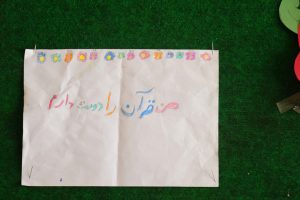RoshanayRah-EN; In the book of Art Psychology, which was published in collaboration with the National Commission for UNESCO, the founder of therapeutic handwriting style, Professor Baher, has explained therapeutic methods in 40 different chapters.
in the book “Psychology of Art,” published in collaboration with the National Commission for UNESCO and titled “Calligraphy Therapy: Calligraphy Therapy Book and Internal and External Interviews,” the founder of the calligraphy therapy style, Professor Baher, states: “Therapeutic aid methods are applicable in 40 hours.” This art therapy includes calligraphy therapy, which in Iran, individuals such as Professor Seyed Ali Reisi have claimed to embody this artistic and scientific style.
Seyed Ali Reisi, the founder of calligraphy therapy style, added: Calligraphy therapy has emerged from the integration of traditional art of calligraphy and the psychology of handwriting and is divided into three categories:
1. Graphoscopy: Examining the general traits and characteristics of the writing and its quality, including margins, uniformity, and order of writing, shape, and form of letters.
2. Graphometry: Analyzing the relative measurements of the writing, including circles, thickness of letters, height of letters, and even the shape of dots.
3. Graphology: Examining the mental and personality states of the writer, as referred to in ancient Persian literature.
Each person’s handwriting is unique and reflects human thoughts and feelings like fingerprints. Handwriting is influenced by the individual’s nervous, mental, age, culture, and climate structures. This writing style not only teaches proper writing to the student but also goes beyond imitation and remains stable over time.
Calligraphy therapy is used as a method to help improve and develop both mental and physical aspects of individuals. This method fosters self-confidence, which is one of the effective factors in artistic and financial success and progress. This method can be used in various communities, including personal therapy, empowerment, increasing creativity, and cultural advancement. It can also play an important role in preserving and promoting local culture.
Ultimately, the art of calligraphy therapy, with its fundamental values, contributes to improving the quality of life and strengthening the cultural and economic aspects of individuals. This art is the most valuable heritage that Iranians possess and can play a significant role in improving society and enhancing the spiritual well-being of individuals.


















Add Comment